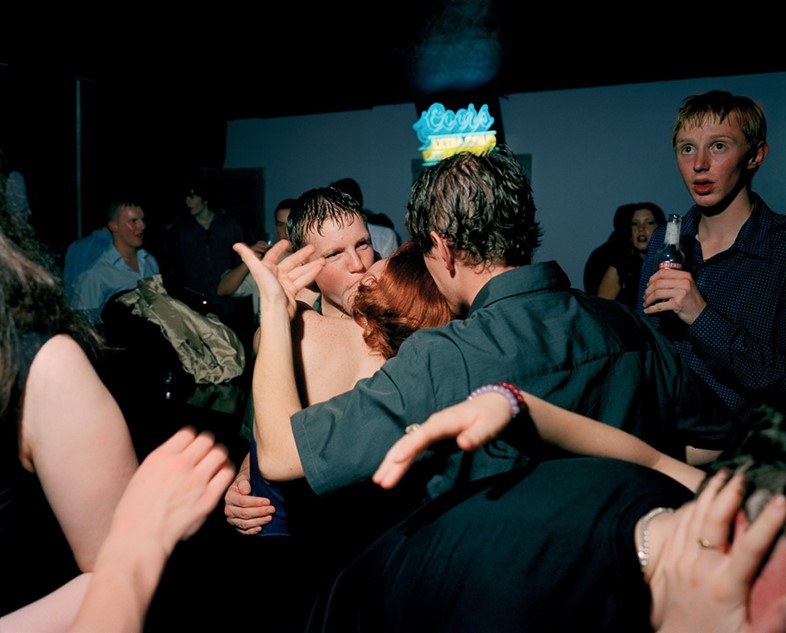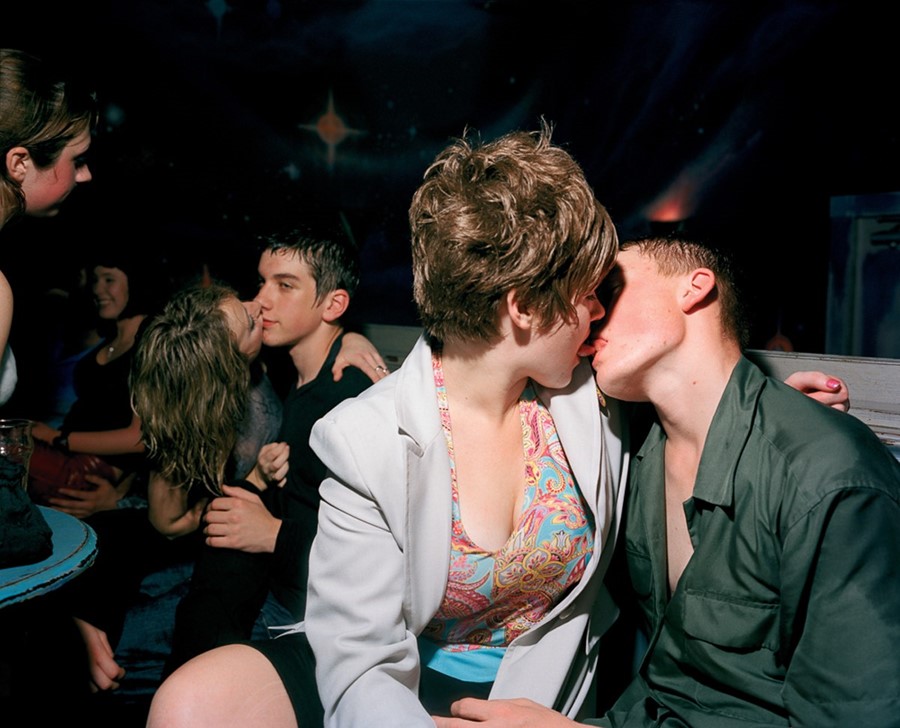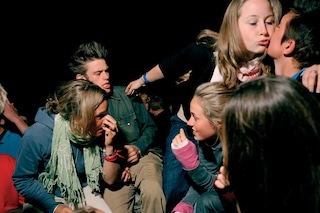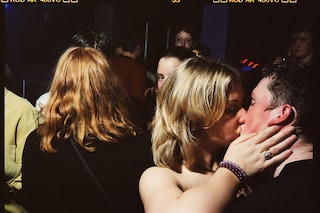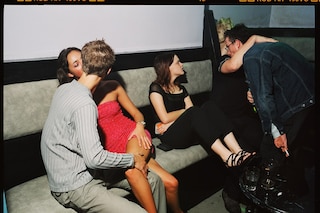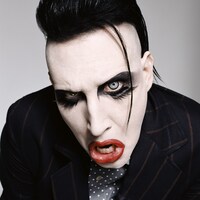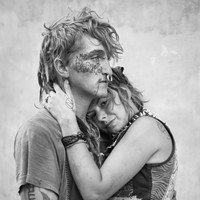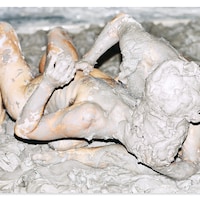Ewen Spencer recalls a photo series that encapsulates the idyllic tunnel vision of British adolescent love
If you’ve ever found yourself entangled in some form of British subculture, chances are Ewen Spencer was right there with you.
Following graduation from the University of Brighton in 1997 with a BA in Editorial Photography, the young Geordie made a pre-emptive beeline for the subcultural bibles of the moment. After ‘blagging’ his way into the Sleazenation office (“they definitely weren’t expecting me – I did sort of let myself in”), and encountering then-editor Steve Beale on the stairwell, the photographer soon had his gig: with a bag of film and camera that was good to go, he was sent on a tour of the country, dropping in on parties, raves and gatherings to capture all things naughty as the 20th century began to trickle out.
“I didn’t just skulk around and just make pictures. I talked to people all night. It was like you were just a part of that night, or that coming together of people” – Ewen Spencer
“(I was always) interested in the idea of style and music and youth. I’d grown up with The Face magazine always being there,” he explains. “I shared a room with my older brother, he had a pile of them.”
“Back then, serious photography was seen as having to go halfway across the world to get photographs. I guess the sort of (thing) that I was interested in was just photographing what was on the doorstep. Being British and being young – that was part of that for me.”
In no time at all, Spencer soon found himself established as the elected documenter of hedonistic Britain. A long-running relationship with UK garage – in which he documented the scene’s rise for The Face – only accelerated his etching into countercultural folklore. He was right in there; his name totally synonymous.
“Well, then what happened is that garage scene sort of fizzled out,” he says, recalling its dissipation at the turn of the noughties. “So they came back – The Face – and said, ‘let’s do some pieces on being a teenager in the 21st century’. Obviously, you know, it was the turn of the century – things were changing quite a lot.”
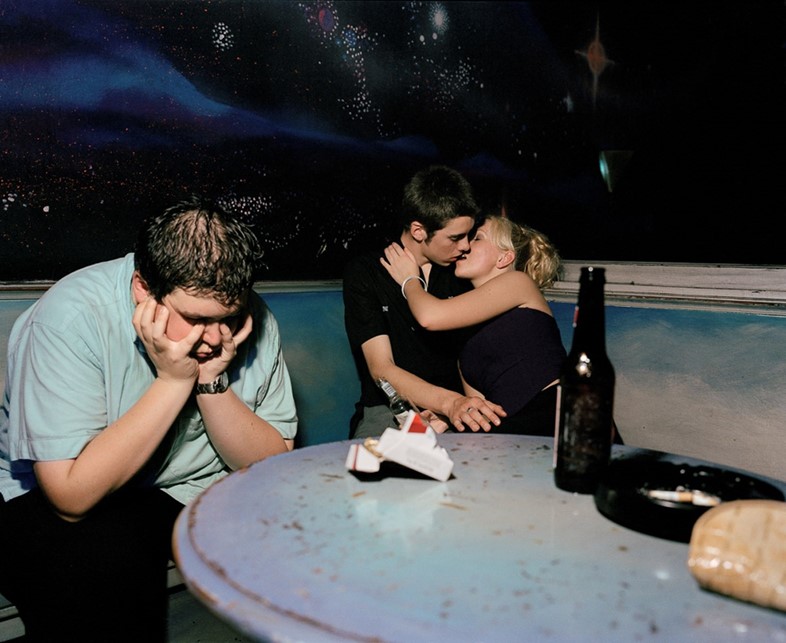
The result was a collection of images that came to be known (“for want of a better title”) as Teenagers, a series capturing exactly what it was to be young, dumb and loved-up in the new millennium. Among the smoke, strobes and sticky floors of the country’s grimiest nightclubs, Spencer’s images totally encapsulated the idyllic tunnel vision of British adolescence. Now, following stints in exhibitions in all over the world, the photos have found their latest iteration in the form of a new book: Young Love.
“The pictures have always been around,” he explains. “They haven’t ever left my world, as it were. They often get published in magazines, shown in galleries – things like that. If there’s ever an exhibition about youth culture, I usually get a call.
“(They are) just relatable. The success of photographs – in terms of people Joseph Szabo or Larry Clark, those guys – is that they’re relatable. It makes sense, cos we’ve all been in those situations to some degree. Szabo’s pictures – of kids on the beach in New Jersey and what have you – those are all very fun, identifiable moments. I feel that’s the success of photographing youth culture.”
“The success of photographs – in terms of people Joseph Szabo or Larry Clark, those guys – is that they’re relatable... we’ve all been in those situations to some degree” – Ewen Spencer
The youth on display in Spencer’s images resonates precisely because of its agelessness (”being young is global, it’s happened all over the world – these moments being re-enacted all over the world, everywhere”), though – for Spencer, at least – Young Love does depict a different time; a pre-digital landscape, in which the print publication still ruled supreme.
“I didn’t just skulk around and just make pictures,” he laughs. “I talked to people all night. It was like you were just a part of that night, or that coming together of people. I chatted to people all night, and they often wanted to make pictures with me.
“Newspapers and magazines held a greater impact at that time – there was more reverence for that. I think people thought, ‘wow, someone’s here from a magazine to take pictures, that’s a big deal.’ I would have thought that when I was younger. I guess that doesn’t apply as much now.”
For a photographer who earned his stripes recording the radical and alternative, there’s something far more universal about the series than his prior and subsequent work. However, if you ask him, he’ll argue that they aren’t necessarily worlds away.
“The normality is that everyone does go through it, but, at the time, you often think you’re doing something special, don’t you. You think you’re changing the wheel.
“Within what you’re doing – I think that’s the interesting part. The nuance of what you’re doing. These pictures are just about people out on a Friday night, having a good time. I think that’s definitely the point of them.”
Young Love is available for pre-order now
